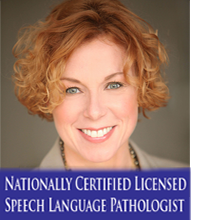Achieve a More Natural Sounding Accent with Articles: Part 2
Review
In Part 1, we noted that in general, we use articles to describe a noun or a noun phrase. They either limit or make the nouns they modify more precise.
We use “the” (considered a definite article) when we want to classify the noun as definite, identified, or specific. Furthermore, we use “the” to indicate that the referent of a noun or noun phrase is agreed upon by the speaker and listener. Here is another way of thinking about when to use “the”; the noun discussed has a specific referent (from the speaker’s point of view) for both the speaker and the listener. Use “the” with most nouns whose specific identity is known to the reader. In other words, when the definite article is used, the identity of these nouns will be clear to the reader for one of the following reasons:
- The noun has been previously mentioned. For example, “A motorcyclist merged onto a highway. After he exited the highway, he realized he had taken the wrong exit.” We used “a” first, and then once the listener heard “highway” mentioned, we used “the.”
- A phrase or clause (group of words that describes the noun) following the noun restricts its identity. “The scar on the right is new.”
- A superlative such as “best, “most,” highest,” etc. makes the noun’s identity specific. “This patient has the highest lab values I’ve ever seen.”
- The noun describes a person, place, or thing.
- The context or situation makes the noun’s identity clear. “Please close the door when you leave.”
Noun as Unique
We also use “the” to indicate an item is unique. For example, an item may be unique by pointing. For example, you might see a dog running in the street and exclaim “Look at the dog!
Noun as Nonspecific
We use “a” and “an” in order to classify the noun as nonspecific. We use “a” and “an” to:
- Introduce a noun to the listener that is specific for the speaker but not the listener
- Show that the noun does not have a specific referent for either the speaker or the listener
- To refer to a noun that is nonspecific for the speaker but is assumed to be specific for the listener
Verb “To Be”
We use “a” and “an” to identify or classify a noun that follows a form of the verb “to be”. For example:
- “This is an interpretation of your x-ray .”
- “Dr. Salem is a cardiologist.”
In those two examples the present tense verb form of “to be” was “is”. Many English language learners omit the indefinite article before singular predicate nouns (meaning the noun is in the comment versus topic position). For example, “interpretation” was in the comment position and “this” was in the topic position of the sentence. “Cardiologist” was in the comment position and “Dr. Salem” was in the topic position of the sentence.
Mass Nouns
For MASS nouns, do not use “a” and “an.” Only use either no article or an indefinite article. For example, mass nouns are nouns that you can’t count. The following are examples of MASS nouns.
- Clothing “The clothing they sell is beautiful.”
- Material “The material used in this dress is comfortable.”
- Luggage “Please give me the luggage.”
- Bacon “I’ll have bacon instead of sausage.”
- Water “The water was cold.”
- Air “The air felt warm.”
- Knowledge “The knowledge she has is very helpful to us.”
- Sugar “The sugar is to the left of the salt.”
- Milk “I’m going to buy milk.”
- Wine “The wine tastes really good.”
Note that for the mass nouns, you can use “a” if you add information. For example:
- “A piece of the clothing ripped off.”
- ” I took a sample of material to show my friend.”
- ” I bought only a piece of luggage from the whole set.”
- “I’ll take a piece of bacon please.”
- “The bottle of water spilled.”
- “I needed a tank of air for my scuba diving trip.”
- “She has a wealth of knowledge.”
- “I only need a packet of sugar.”
- “I’m buying a gallon of milk.”
- “I’ll have a glass of wine please.”
Want More?
Learn many more rules and hints when using articles. Watch for our next blog, “Achieve a More Natural Accent with Articles: Part 3”.
References
The Writing Center at Washington University in Saint Louis http://artsci.wustl.edu/~writing/articles.htm
Marianne C., & Larsen-Freeman D. (1983). The Grammar Book: An ESL/EFL Teacher’s Course.
Fromkin, V. & Rodman, R. (1988). An Introduction to Language: Fourth EditionAA superlative such as “best,” “highest,” “most,” etc. makes the noun’s identity specific. “This patient has the highest lab count I’ve ever seen.”
